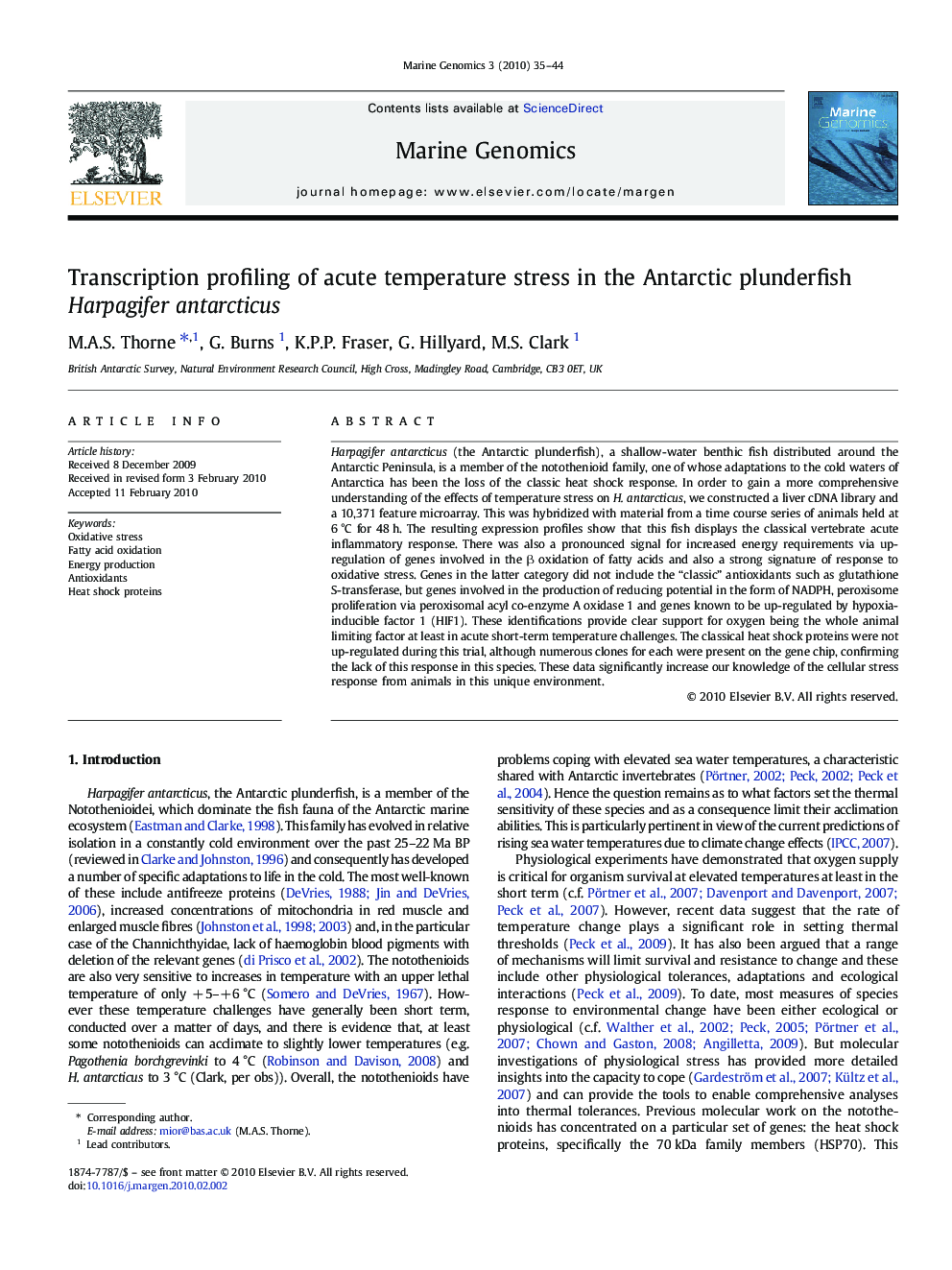| Article ID | Journal | Published Year | Pages | File Type |
|---|---|---|---|---|
| 2058393 | Marine Genomics | 2010 | 10 Pages |
Harpagifer antarcticus (the Antarctic plunderfish), a shallow-water benthic fish distributed around the Antarctic Peninsula, is a member of the notothenioid family, one of whose adaptations to the cold waters of Antarctica has been the loss of the classic heat shock response. In order to gain a more comprehensive understanding of the effects of temperature stress on H. antarcticus, we constructed a liver cDNA library and a 10,371 feature microarray. This was hybridized with material from a time course series of animals held at 6 °C for 48 h. The resulting expression profiles show that this fish displays the classical vertebrate acute inflammatory response. There was also a pronounced signal for increased energy requirements via up-regulation of genes involved in the β oxidation of fatty acids and also a strong signature of response to oxidative stress. Genes in the latter category did not include the “classic” antioxidants such as glutathione S-transferase, but genes involved in the production of reducing potential in the form of NADPH, peroxisome proliferation via peroxisomal acyl co-enzyme A oxidase 1 and genes known to be up-regulated by hypoxia-inducible factor 1 (HIF1). These identifications provide clear support for oxygen being the whole animal limiting factor at least in acute short-term temperature challenges. The classical heat shock proteins were not up-regulated during this trial, although numerous clones for each were present on the gene chip, confirming the lack of this response in this species. These data significantly increase our knowledge of the cellular stress response from animals in this unique environment.
